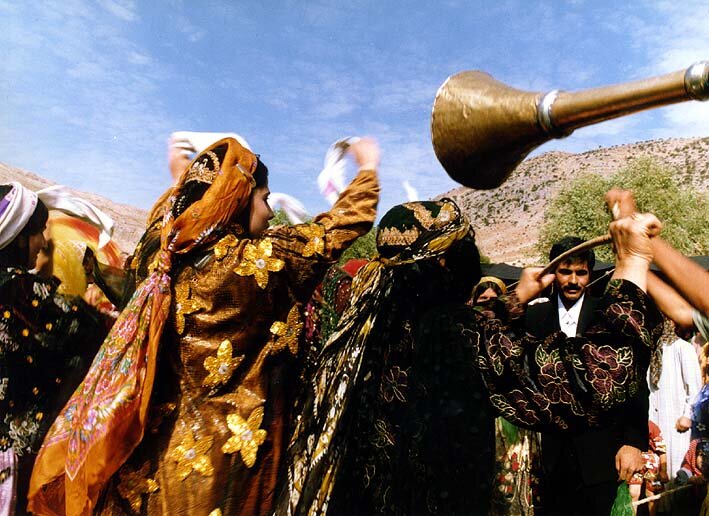Festival to put western provinces on culture lovers’ map

TEHRAN – Tehran’s Milad Tower is set to host a festival dedicated to attractions of western Iranian provinces, believed to be quite unknown for many culture lovers.
“Main elements of the event are setting up booths and nomadic Siah-Chadors (Black Tents) introducing tourist attractions, presenting and selling handicrafts, performing music and ritual ceremonies, offering indigenous souvenirs and dishes,” the deputy tourism minister Ali-Asghar Shalbafian said on Friday.
Experts say, despite having vibrant natural landscapes, countless historical sites, and above all, hospitable people, western Iranian provinces are still somehow lesser-known compared to other parts of the ancient land.
According to Shalbafian the majority of domestic travelers have not heard the names of various cities in western Iran . “In fact, [regarding tourism] those destinations have not been introduced or advertised properly.”
“Our goal is to define new tourism routes with accentuation on western Iranian provinces to diversify tourist destinations and take advantage of its capabilities.”
Over the past couple of years, western Iranian provinces have held several meetings to discuss ways to expand tourism, bringing together local officials, hoteliers, travel agents, and tour operators from the provinces of Lorestan, Ilam, Chaharmahal-Bakhtiari, Kohgiluyeh and Boyer-Ahmad, Kermanshah, Kordestan, Hamedan, Zanjan, and East Azarbaijan, amongst others.
One of the potentially-significand travel destinations in the west wing is the Uramanat cultural landscape, which was registered on the UNESCO World Heritage list last year.
Stretched on the slopes of Sarvabad county at the heart of the Zagros Mountains, and shared between the provinces of Kordestan and Kermanshah in western Iran, the scenic landscape embraces hundreds of villages, 106,000 hectares of land, and 303,000 hectares of surrounding properties.
It boasts dense and step-like rows of houses in a way that the roof of each house forms the yard of the upper one, a feature that adds to its charm and attractiveness.
Archaeological findings dating back about 40,000 years, caves and rock shelters, ancient paths and ways along the valleys, motifs and inscriptions, cemeteries, mounds, castles, settlements, and other historical evidence attest to the continuity of life in the Uramanat region from the Paleolithic to this time.
According to the UN body, Uramanat is an exceptional testimony to a cultural tradition of the semi-nomadic agropastoral way of life of the Hawrami people, a Kurdish tribe that has resided in the Zagros Mountains for millennia. This outstanding cultural tradition is manifested in the ancestral practices of transhumance, the mode of seasonal living in Havars, steep-slope terraced agriculture, soil and water management, traditional knowledge for planning and constructing steeply terraced villages, and rich diversity of intangible heritage, all reflecting a harmonious co-existence with nature.
The Islamic Republic expects to reap a bonanza from its numerous tourist spots such as bazaars, museums, mosques, bridges, bathhouses, madrasas, mausoleums, churches, towers, and mansions, of which 26 are inscribed on the UNESCO World Heritage list.
Exhibitors, tour operators, artists and crafts people from the provinces of Hamedan, Ilam, Kermanshah and Lorestan will take part in the festival, which will be held at the foot of the Milad Tower from July 24 to 28.
AFM
Leave a Comment